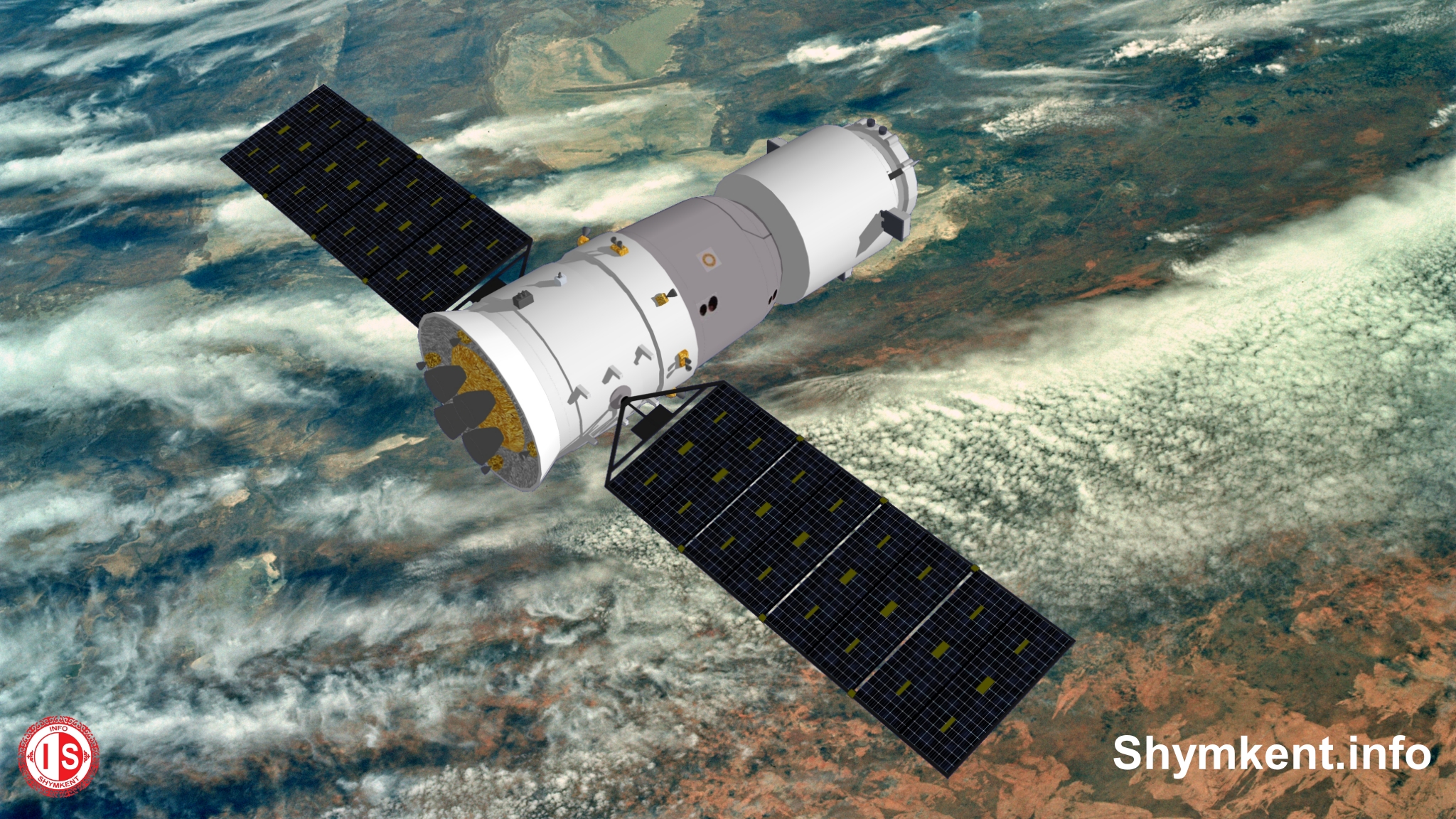The Shenzhou spacecraft is China’s crewed access to space. It is China’s own spacecraft development but has very much similarities with Russia’s Soyuz spacecraft.
Facts
- Name: ShenZhou (神舟) is Chinese for Divine Ship
- Length: 9.25 m
- Diameter: max. 2.8 m (living compartment)
- Weight: 7.84 t (empty)
- Docking port: One
- Energy supply: Two 4-segment solar arrays (with a span of 17m)
- Expected life time: around one month (since Shenzhou 11)
- Launch vehicle: Long March 2F
- Max. Persons: 3
- Volume: 14.00 m3
Mission overview
| Mission name | Launch | Landing | Duration | Crew | Mission description |
| Shenzhou 1 | 19th November 1999 | 20th November 1999 | 21 hours 11 minutes | No crew on board | The Shenzhou 1 was the first test flight of a Shenzhou spacecraft. |
| Shenzhou 2 | 9th January 2001 | 16th January 2001 | 7 days 10 hours 22 minutes | No crew on board | Shenzhou 2 carried multiple scientific payloads including monkey, dog, rabbit and other animals to space and save back to earth. |
| Shenzhou 3 | 25th March 2002 | 1st April 2002 | 6 days 18 hours 51 minutes | No crew on board | Onboard Shenzhou 3 a human-sized test dummy went to space and back to earth. |
| Shenzhou 4 | 29th December 2002 | 5th January 2003 | 6 days 18 hours 36 minutes | No crew on board | The last test flight before a manned spaceflight carried a test dummy and multiple science experiments. |
| Shenzhou 5 | 15th October 2003 | 15th October 2003 | 21 hours 23 minutes | – Yang Liwei | This was China’s first manned spaceflight and China became the third country that send a human into space by their own spacecraft and rocket. |
| Shenzhou 6 | 12th October 2005 | 16th October 2005 | 4 days 19 hours 33 minutes | – Fei Junlong – Nie Haisheng | Shenzhou 6 was China’s first two-person spaceflight and they stayed multiple days in space. |
| Shenzhou 7 | 25th September 2008 | 28th September 2008 | 2 days 20 hours 27 minutes | – Zhai Zhigang – Liu Boming – Jing Haipeng | On Shenzhou 7 China performed for the first time a three-person spaceflight and undertook the first spacewalk. |
| Shenzhou 8 | 31st October 2011 | 17th November 2011 | 16 days 13 hours 34 minutes | No crew on board | During Shenzhou 8 mission occurred the first autonomous docking of a Shenzhou spacecraft with Tiangong-1 space laboratory. |
| Shenzhou 9 | 16th June 2012 | 29th June 2012 | 12 days 15 hours 24 minutes | – Jing Haipeng – Liu Wang – Liu Yang | This Shenzhou mission performed the first manned visit of Tiangong-1 space laboratory and a first spaceflight of a Chinese woman. |
| Shenzhou 10 | 11th June 2013 | 26th June 2013 | 14 days 14 hours 29 minutes | – Nie Haisheng – Zhang Xiaoguang – Wang Yaping | The Shenzhou 10 flight was the second manned visit of Tiangong-1 space laboratory and the first Chinese two-week-stay in space. |
| Shenzhou 11 | 17th October 2016 | 18th November 2016 | 32 days 06 hours 29 minutes | – Jing Haipeng – Chen Dong | Shenzhou 11 marked China’s first long duration flight and only flight to Tiangong-2 space laboratory. |
| Shenzhou 12 | 17th June 2021 | 17th September 2021 | 92 days 04 hours 11 minutes | – Nie Haisheng – Liu Boming – Yang Hongbo | The Shenzhou 12 was the first manned flight to visit the core module TianHe of China’s space station. |
| Shenzhou 13 | 15th October 2021 | 16th April 2022 | 182 days, 9 hours 32 minutes | – Zhai Zhigang – Wang Yaping – Ye Guangfu | The Shenzhou 13 was the 2nd flight to the Chinese Space Station. The long-duration flight was another record for China as well for Wang Yaping. She is now Chinese with the longest stay in space with on overall of 197 days. |
| Shenzhou 14 | 5th June 2022 | expected December 2022 | around 6 months | – Cheng Dong – Liu Yang – Cai Xuzhe | The Shenzhou 14 is China’s 3rd flight to the Chinese Space Station Tiangong. The mission was mostly responsible to extend the space station with two new science modules Wentian and Mengtian. |
| Shenzhou 15 | 29th November | expected May/June 2023 | around 6 months | – Fei Junlong – Deng Qingming – Zhang Lu | The Shenzhou 15 is China’s 4th flight to the Chinese Space Station Tiangong. It is the first time in Chinese Spaceflight that one crew is handing over the command of the station to the other at the space station. |



